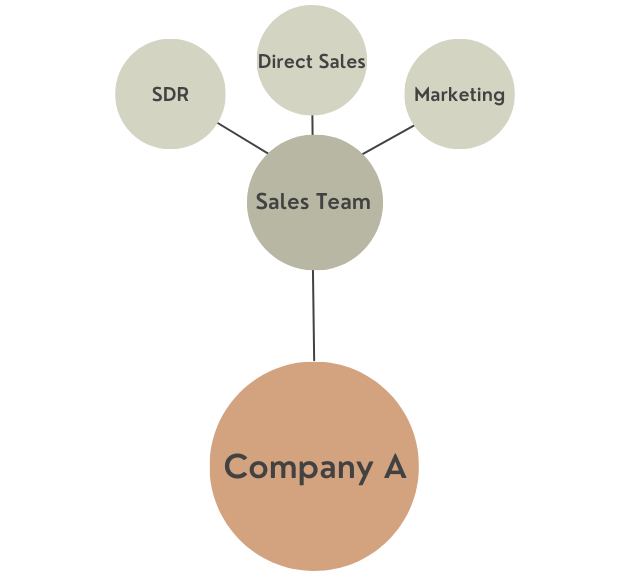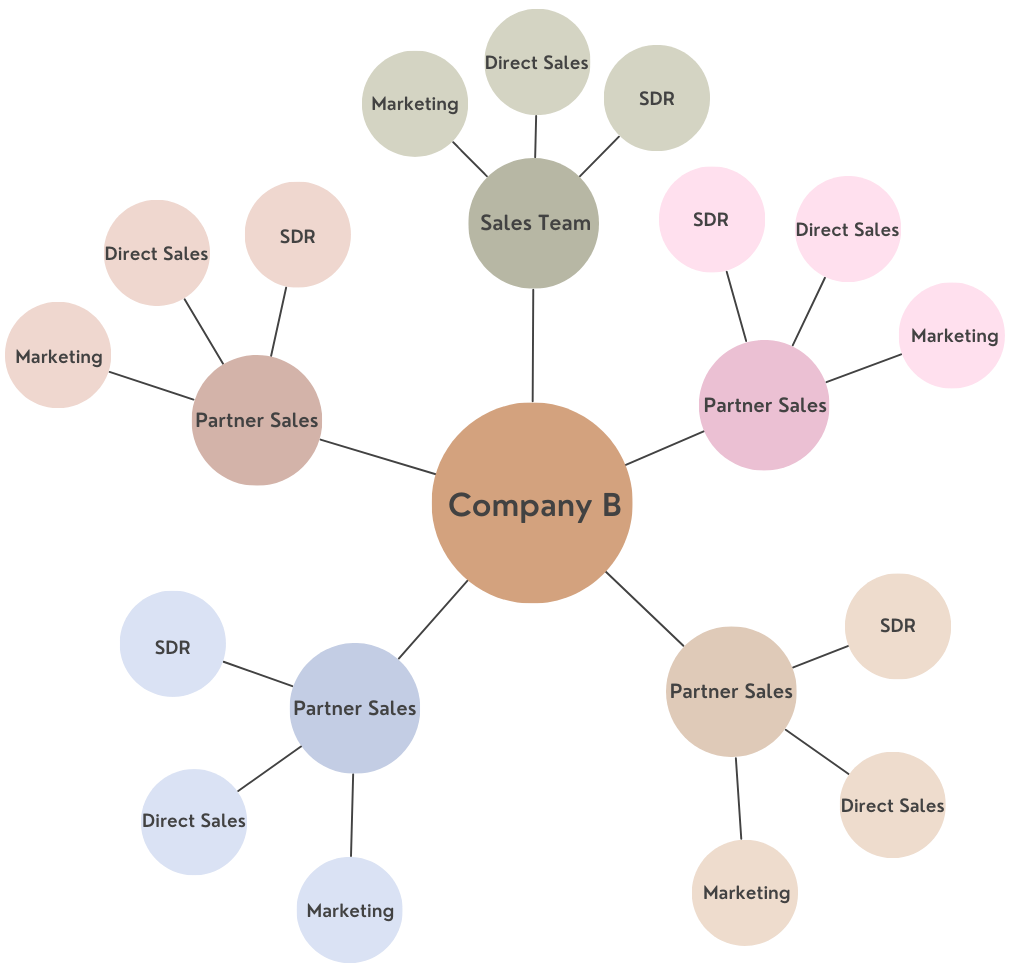As the business landscape becomes increasingly crowded and competitive, traditional go-to-market methods are proving less effective. Inboxes are flooded with generic sales pitches and buyers are becoming more resistant to pushy sales tactics. In this environment, companies are being forced to rethink their approach to influencing buyers.
Enter the ecosystem business model.
An ecosystem business model prioritizes collaboration and partnerships. You create a network of complementary products and services that can be leveraged to offer more value to customers, drive innovation, and create new revenue streams.
In this post, we’ll explore the concept of being "ecosystem first" in your business practices and the risks of ignoring this new way of going to market.
Whether you're a new business looking to scale or an established company seeking to jumpstart your revenue-generating activities, we’ll talk about how an ecosystem business model can bring tremendous benefits to your organization.
Plus, we’ll delve into real-world examples of successful ecosystem business models and provide practical tips for implementing your own.
Let's begin…
What is an ecosystem business model?
An ecosystem business model is a strategic approach that prioritizes collaboration and partnerships to create value for the customer. In other words, rather than trying to offer everything your customers need, you build relationships with other organizations that provide complementary functionality and services.
Let’s break this down.
Regardless of the type of business you are, it's incredibly hard to be a one stop shop for everything your customers need. Businesses have many needs – your software simply can’t offer all requested functionality, consultation, and implementation.
And every customer is different. One may have a strong design department but need help with data analysis. Another may need robust management tools but less support.
Fulfilling everyone’s needs brings to mind a quote from Ron Swanson: “Don’t half ass two things. Whole ass one thing.”
With an ecosystem business model, you use partnerships to complete the puzzle. Your software does what it does best, and you work with other companies who do what they do best. The end product is customers who have all of their needs filled seamlessly.
Let’s take a look at three internal departments that directly stand to benefit from an ecosystem business model: product, sales, and customer success.
The “build,” “buy,” or “partner” framework
The build, buy, or partner framework is a common decision-making model used to evaluate your options for offering product functionality: Build it in house, buy another company and integrate their existing technology into yours, or collaborate with an external partner to achieve the same goal.
C-suite and product teams should prioritize opting for the “partner” first. Here’s why:
You likely have long product roadmaps filled with features and functionality driven from customer requests and competitive analysis.
Here’s what it looks like if you build everything: Each feature is added to an ever-growing backlog where it sits until it’s prioritized and built. But development is relatively slow and expensive. Plus, you simply can’t prioritize everything. You’ll find yourself in long dev cycles with impatient customers and, probably, internal frustration and burnout.
What if you bought software with the functionality you’re looking for? Although buying makes sense in some major cases, it really isn’t a solution for every request – and it’s expensive.
By choosing the increasingly-popular partner option, you can actually ship faster, ship more, and offer a better customer experience. You or your partner builds an integration, which is a much lighter lift – relative to building new functionality or buying another company outright (which means combing products, tools, and people).
An ecosystem business model is just that: making the “Partner” choice out of buy, build, partner often. Then, focusing your developers’ time on making your software’s core functionality best-in-class.
How product teams benefit from an ecosystem business model:
- Faster time to market. Integrations and relationships are faster to build than software.
- Reduced development costs. Faster build time means fewer dev hours in order to offer the same functionality.
- Access to new markets. Expand your total addressable market by targeting partners’ customers.
- Customer stickiness. Customers who use integrations are less likely to churn.
Traditional selling vs ecosystem selling
How can an ecosystem business model help sales and marketing?
At the risk of oversimplifying it, the traditional sales method comes down to cold outreach, inbound strategy, and advertising. Although generally successful, this is a 1:1 approach. Your sales and marketing teams run campaigns and see linear results from them.
1 effort or $$$ = 1 prospect. Rinse and repeat.
This traditional sales model shows the linear path:

The ecosystem business model, on the other hand, can drive scaled growth through your network of partners – these partners are generally solutions providers.
Think about it: By partnering with service providers, you actually create an outsourced sales and marketing team to promote your products and services. And you only pay them once the deal is in the books.
It’s important to note here that tech partners can also act as channel partners. Their sales teams will drive leads and act as an outsourced sales team for you as well.
Your effort is in building and maintaining relationships with your partners.
The results? Low Cost Per Acquisition leads that are proven to close quicker.
The ecosystem business model still includes the direct sales model, but also involves a network of partners working together to promote and sell your products and services.

In an ecosystem led sales model your sales team is expanded through the use of your partners' sales teams.
Additional sales benefits from an ecosystem business model:
- Increased reach. You can drive more awareness with less resources.
- Credibility. Your partners back up your claims with a respected “seal of approval.”
- Faster sales cycles. 50% faster, according to Freshworks.
- Higher close rate. 2x higher, according to Syncari.
Customer success vs Solution partners
Your partners don’t just pour leads into the top of your funnel. Solution partners offer services complementary to your tool. Many of them have actually built their own business model on it.
Think Salesforce implementation. Zapier automation experts. HubSpot operations specialists. Designers for almost any martech tool.
Technology is so advanced these days, it takes expertise just to use it.
There’s only so much expected from your customer success team. At some point, your customers understand they will have to pay for services.
In an ecosystem business model, these solutions partners are your next-level of support. You can limit what your customer success team offers and promote solution partners to your customers.
Time and money saved. Partners are happy. Customers are happy. Win-win-win.
But, there’s even another benefit here: Solutions partners drive product adoption and usage. With their account set up quickly and effectively, customers are much more likely to use it – and get more value from it.
These solutions partners can include implementation partners, training providers, and support specialists, with specific expertise. By partnering with them, you can address the specific needs of your customers.
Don’t rely entirely on your customer success teams to drive adoption and customer satisfaction. They’re limited in resources, special skills, and scalability.
Support benefits:
- Expertise. Solution partners deliver high-quality services for niche needs.
- Scalability. Without having to hire or train solutions providers, you’re not limited in the support they can provide.
- Flexibility. Meet customers' specific needs and preferences.
Examples of ecosystem first businesses
Here are some real life examples of ecosystem business models that exist in the market today. These are the shining lights of ecosystems in the world of B2B SaaS.
HubSpot
You can't talk about ecosystems without talking about HubSpot.
HubSpot is one of the market leading CRM platforms. And, over the years, it has built one of the most successful ecosystem business models.
Check out all their partnerships on the HubSpot ecosystem page. (Notice trends from the topics covered above?)

The main ways HubSpot drives their ecosystem business strategy is through integrations and solutions partners.
Their app marketplace is where HubSpot customers can find 3rd party solutions that connect to HubSpot’s platform. 1000s of integrations considerably extend the functionality of the core platform, making it holistic and robust.
And HubSpot’s 7K+ solutions providers get significant promotion, too. You can search them based on service, industry, accreditation, even location! There’s something for everyone.
Having a public facing integrations/solutions marketplace like HubSpot’s is imperative to the success of your ecosystem. (If you build it, they will not necessarily come. Especially if they can’t find it.)
HubSpot’s in-app marketplace is also a major part of their ecosystem’s success, if not the most important. Their users can find and implement solutions to problems they’re facing – in the moment.
Offering immediate solutions to a problem makes all the difference to your customers happiness – and stickiness.
The large network of solutions and tech partners enhances HubSpot's brand, adoption, and retention.
Note: You can implement an out-of-the box custom marketplace for your business with Partner Fleet.
Microsoft
95% of Microsoft’s commercial revenue flows directly through their partner ecosystem.
95%!
Microsoft has a MASSIVE partner network with over 400,000 partners.
These partners include hardware manufacturers, software developers, and service providers.
Microsoft relies on partners for solution offerings, but they also ensure that people make a lot of money through partnering.
In fact, according to a study by the IDC, for every $1 of Microsoft revenue, partners are able to receive a multiple in their own business depending on their activities or revenue share of those activities. Services-led partners make $7.63, and software-led partners make $10.11.

This is an ecosystem business model at its finest, where businesses have been created with the specific purpose of helping customers with Microsoft products.
Microsoft also has an app store, where integration partners can be listed and purchased by Microsoft customers, increasing their overall feature set.
How to build an ecosystem business model
Ecosystem business models are not created overnight.
It takes time and care to build a truly effective ecosystem-lead business strategy.
To get your business moving in the right direction, the first thing you need to do is to gain consensus from the executive team at your organization.
As mentioned, for a truly ecosystem led business strategy to be successful there needs to be a move away from doing everything yourself (such as building features) and toward getting partners involved.
Once your executives are on board, formulate a strategy to attack the lowest hanging fruit: product, sales, or support.
Normally, integrations are the easiest first step. Customers never stop requesting new features and product teams are always looking for ways to ship features with menial development time.
Once you build an integration that drives upside value for mutual customers, your partners sales & CS teams will have a meaningful incentive to refer business to you, extending the value of an integration from product to sales.
Identify and build partnerships with relevant companies that offer services your customers are asking for. (Actually, it’s likely that your customers are actually asking for the integration itself – which makes these early decisions even easier).
Just make the ask! Reach out to network connections, do cold outreach, and attend events.
Next, you can build an API that enables third party developers to easily build integrations with your products, in addition to creating an app store/partner marketplace where your current customers can discover your partners and adopt partner solutions.
Related: How to build a platform ecosystem.
It is also important to provide ongoing support and resources to your partners , including training and enablement programs, and partner managers to provide further support. This will help to ensure that your ecosystem is being used effectively and that your partners are happy and successful.
Watch this 2-minute explanation on the scope of starting a partnership program to having a full-blown ecosystem business model.
Get started
Changing to an ecosystem business model may sound intimidating, but now is the time. It’s the decade of ecosystems so it’s time to get on board.
Take a look at small ways you can start using partnerships to solve business problems and you’ll likely open up the floodgates of new ideas. Those, in turn, will lead to overall strategic initiatives.
Although they take time to grow and to be successful, ecosystem led businesses such as Microsoft and HubSpot have shown the power of this approach in creating long-term sustainable growth and a loyal customer base.
If you are looking to learn more about all things ecosystems and partnership, read more in the Partner Fleet blog.




